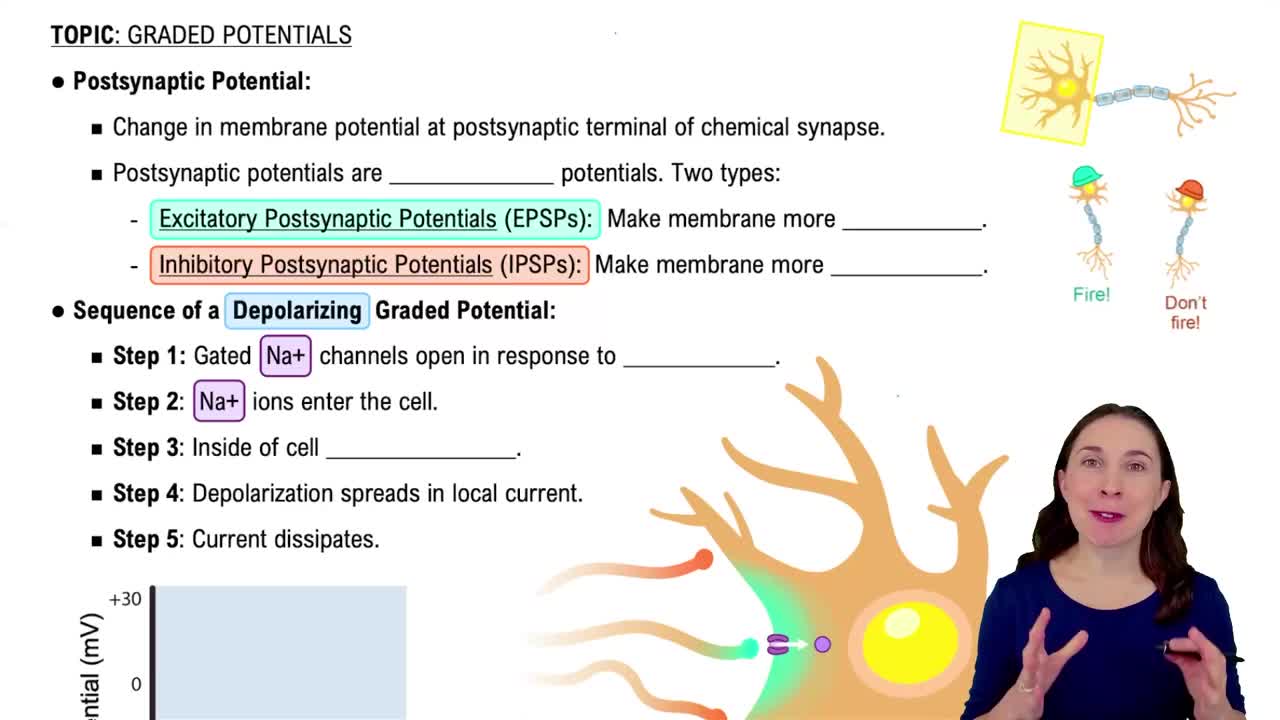Multiple Choice
___________ are all identical, whereas __________ can be larger or smaller depending on the level of stimulation.
 Verified step by step guidance
Verified step by step guidance Verified video answer for a similar problem:
Verified video answer for a similar problem:



 5:17m
5:17mMaster Graded and Action Potentials with a bite sized video explanation from Bruce Bryan
Start learning